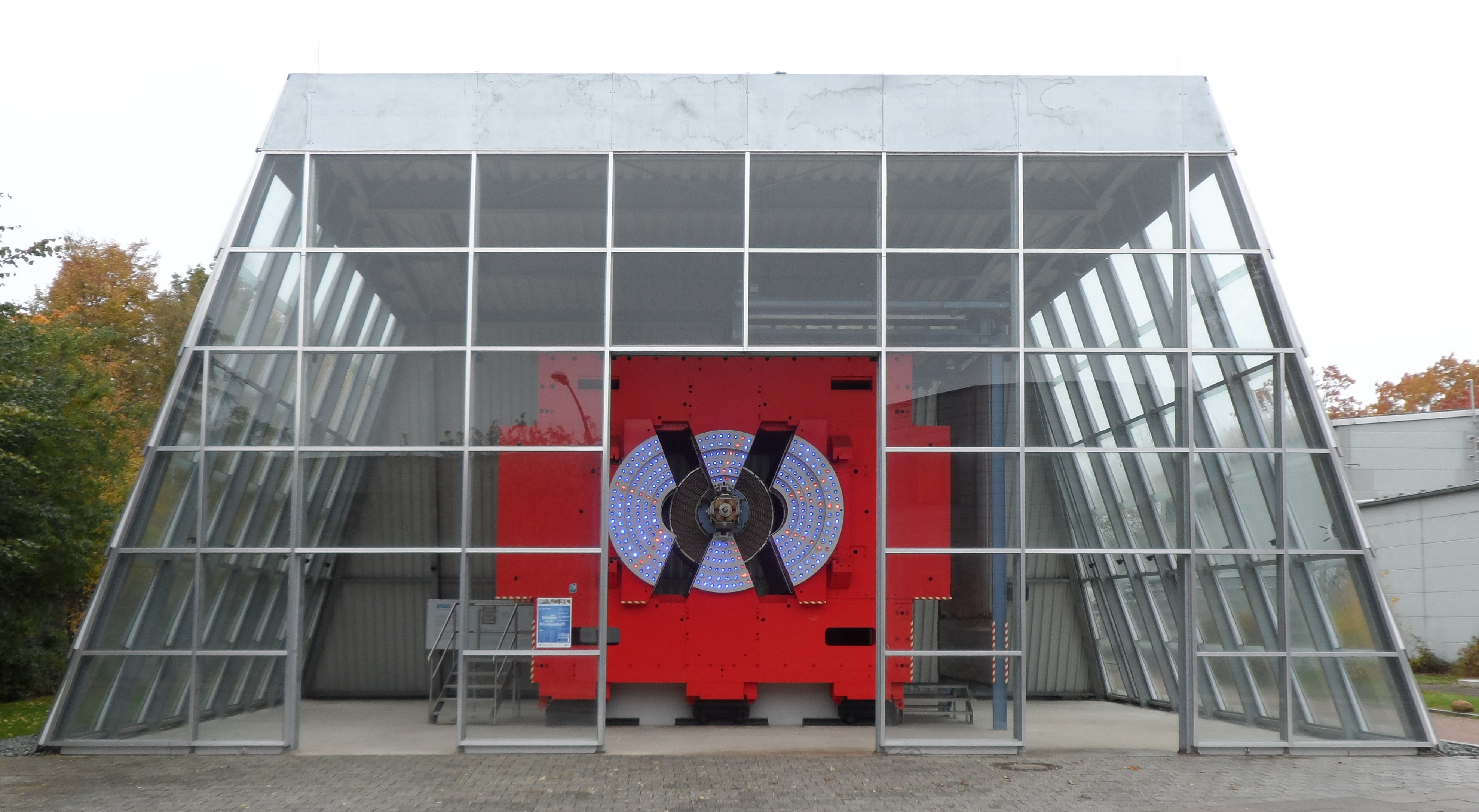ARGUS (experiment) on:
[Wikipedia]
[Google]
[Amazon]
 ARGUS (A Russian-German-United States-Swedish Collaboration; later joined by Canada and the former Yugoslavia) was a
ARGUS (A Russian-German-United States-Swedish Collaboration; later joined by Canada and the former Yugoslavia) was a
Webpage of ARGUS Fest
a symposium to commemorate the 20th anniversary of the discovery of B-meson oscillations. (Last accessed on Sept. 10, 2007)
Record for ARGUS
on
 ARGUS (A Russian-German-United States-Swedish Collaboration; later joined by Canada and the former Yugoslavia) was a
ARGUS (A Russian-German-United States-Swedish Collaboration; later joined by Canada and the former Yugoslavia) was a particle physics
Particle physics or high-energy physics is the study of Elementary particle, fundamental particles and fundamental interaction, forces that constitute matter and radiation. The field also studies combinations of elementary particles up to the s ...
experiment that ran at the electron
The electron (, or in nuclear reactions) is a subatomic particle with a negative one elementary charge, elementary electric charge. It is a fundamental particle that comprises the ordinary matter that makes up the universe, along with up qua ...
–positron
The positron or antielectron is the particle with an electric charge of +1''elementary charge, e'', a Spin (physics), spin of 1/2 (the same as the electron), and the same Electron rest mass, mass as an electron. It is the antiparticle (antimatt ...
collider ring DORIS II at the German national laboratory DESY. Its aim was to explore properties of charm and bottom quarks. Its construction started in 1979, the detector was commissioned in 1982 and operated until 1992.
The ARGUS detector was a hermetic detector with 90% coverage of the full solid angle. It had drift chambers, a time-of-flight system, an electromagnetic calorimeter
A calorimeter is a device used for calorimetry, or the process of measuring the heat of chemical reactions or physical changes as well as heat capacity. Differential scanning calorimeters, isothermal micro calorimeters, titration calorimeters ...
and a muon
A muon ( ; from the Greek letter mu (μ) used to represent it) is an elementary particle similar to the electron, with an electric charge of −1 '' e'' and a spin of ''ħ'', but with a much greater mass. It is classified as a ...
chamber system.
The ARGUS experiment was the first experiment that observed the mixing of the B meson
In particle physics, B mesons are mesons composed of a bottom antiquark and either an up (), down (), strange () or charm quark (). The combination of a bottom antiquark and a top quark is not thought to be possible because of the top quark' ...
s into its antiparticle
In particle physics, every type of particle of "ordinary" matter (as opposed to antimatter) is associated with an antiparticle with the same mass but with opposite physical charges (such as electric charge). For example, the antiparticle of the ...
, the anti-B meson; this was done in 1987. This observation led to the conclusion that the second-heaviest quark – the bottom quark
The bottom quark, beauty quark, or b quark, is an elementary particle of the third generation. It is a heavy quark with a charge of − ''e''.
All quarks are described in a similar way by electroweak interaction and quantum chromodynamic ...
– could under certain circumstances convert into a different, hitherto unknown quark, which had to have a huge mass. This quark, the top quark
The top quark, sometimes also referred to as the truth quark, (symbol: t) is the most massive of all observed elementary particles. It derives its mass from its coupling to the Higgs field. This coupling is very close to unity; in the Standard ...
, was discovered in 1995 at Fermilab
Fermi National Accelerator Laboratory (Fermilab), located in Batavia, Illinois, near Chicago, is a United States Department of Energy United States Department of Energy National Labs, national laboratory specializing in high-energy particle phys ...
.Abe, Fumio, H. Akimoto, A. Akopian, M. G. Albrow, S. R. Amendolia, D. Amidei, J. Antos et al. "Observation of top quark production in p p collisions with the Collider Detector at Fermilab." Physical review letters 74, no. 14 (1995): 2626.
The ARGUS distribution is named after the experiment. In 2010, the former site of ARGUS at DORIS became the location of the OLYMPUS experiment.
External links
Webpage of ARGUS Fest
a symposium to commemorate the 20th anniversary of the discovery of B-meson oscillations. (Last accessed on Sept. 10, 2007)
Record for ARGUS
on
INSPIRE-HEP
INSPIRE-HEP is an open access digital library for the field of high energy physics (HEP). It is the successor of the Stanford Physics Information Retrieval System (SPIRES) database, the main literature database for high energy physics since the 1 ...
References